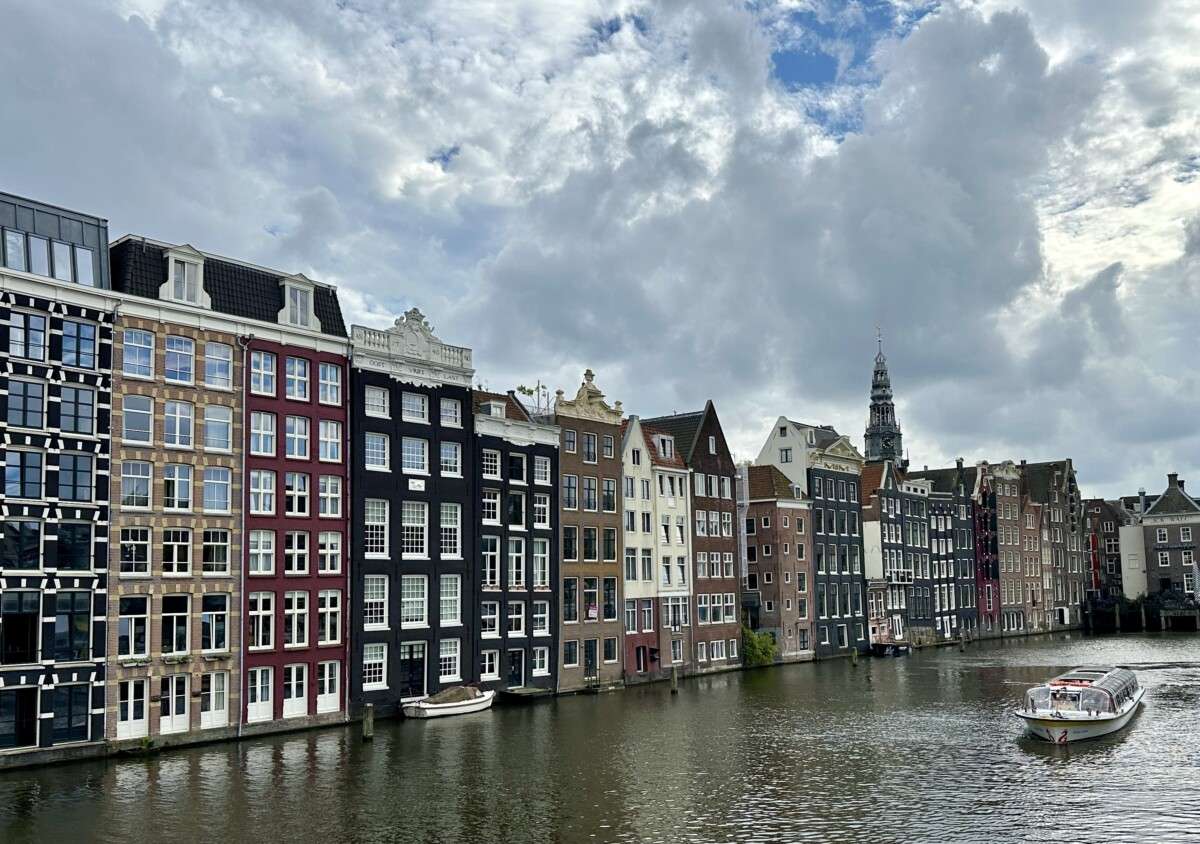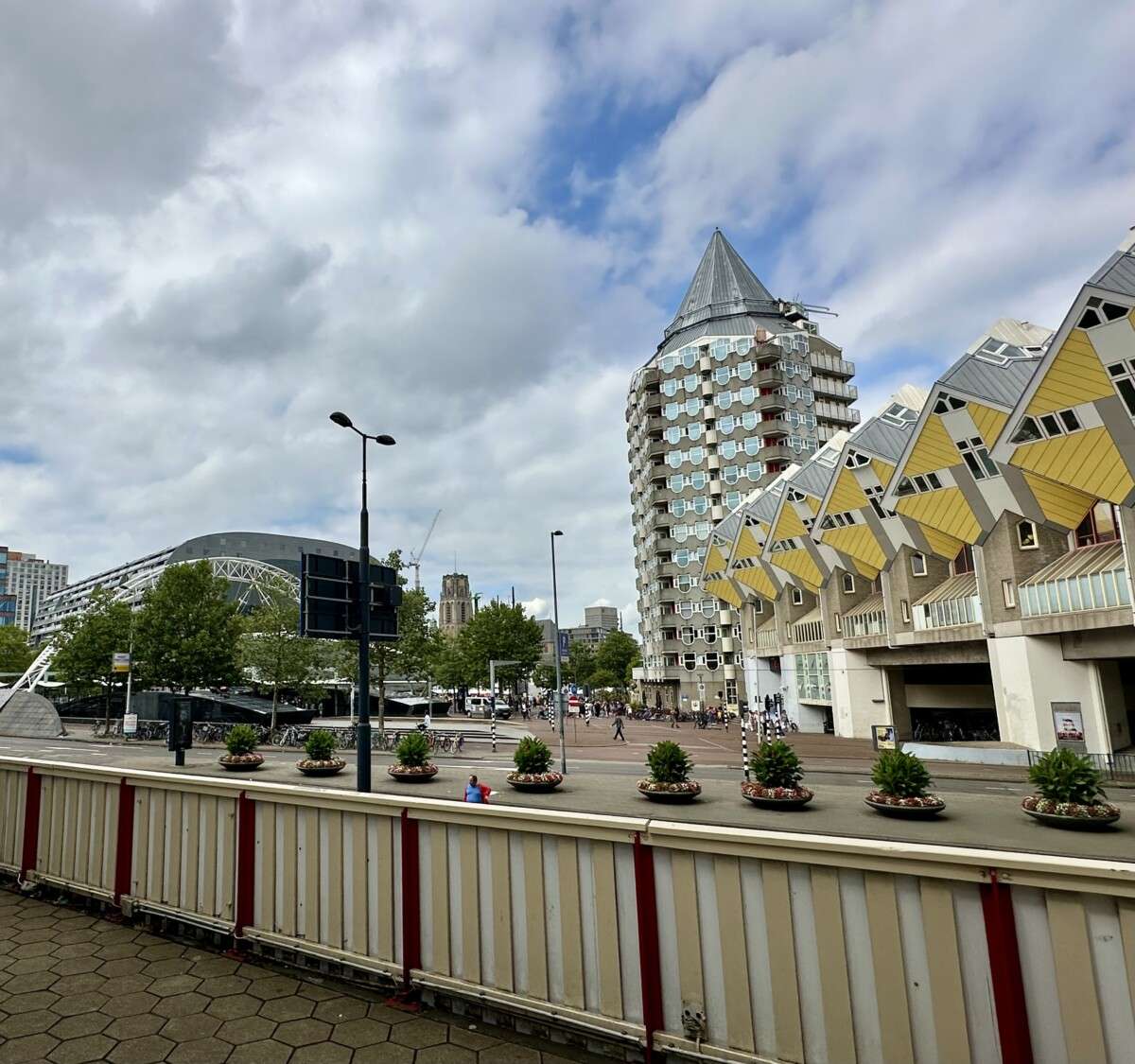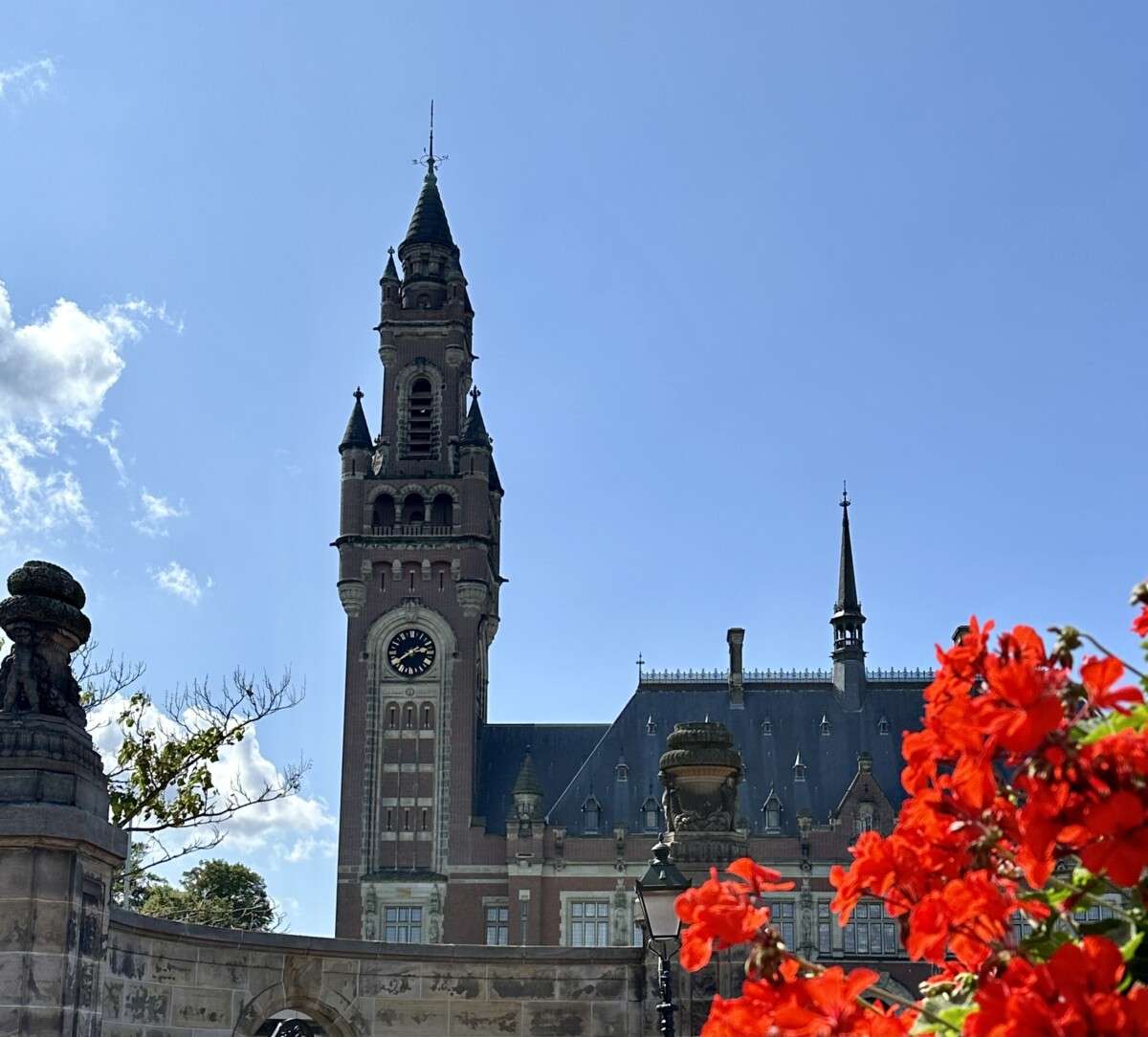Heidelberg is a city located about one hour south of Frankfurt by train. It sits along the banks of the Neckar River and has a beautiful old town with the Heidelberg Castle on the hill above it. Founded in 1196, it is one of the few towns that remained relatively untouched during World War II, so it retains its medieval charm.

Old buildings along the main street through old town have been repurposed and are filled with shops, restaurants, cafes and gelato stores on the ground level. On our first day we stopped in one to enjoy a beer (or, as they say in Germany, a bier) and do some people watching.

On our first full day here we joined a small group walking tour to learn more about the area. Victor, our tour guide, is originally from Siberia. He is a PhD student at Heidelberg University, one of the oldest universities in Germany.
The town square, where we met, is also the location of the Rathaus (City Hall) and was full of wedding parties. As we learned on another tour in Frankfort, German law requires all couples to get married at city hall – they can then have a reception anywhere else. Victor told us that so many couples want to get married here because of the beautiful buildings, that the wait list is often over a year long.


According to Victor, the town claims to have been founded in 1196 because that is the oldest written mention in monestary records. At one end of the Old Town, next to City Hall, is the Church of the Holy Spirit, which dates back to the early 16th century.

On one wall on the side of the Church Victor pointed out some circles carved into the wall. He told us that pretzels were required by law to be made at least the size of the circle. There are several circles because pretzel sizes changed over the years.
I looked everywhere online to find some confirmation of this story but couldn’t. It was still an intersting tale.

The Church of the Holy Spirit has been shared over the centuries by both Catholics and Protestants – maybe not “shared” exactly, but passed back and forth through wars and conflicts. At one point, a wall was placed in the middle of the church to split the space so it could be used by both congregations at the same time. The wall was removed in 1936 and today it is used exclusively by Protestants – and the Catholics built their own church nearby.


Victor pointed out this drugstore. He said it has been a part of the pub scene for over 50 years. It is also “legendary” (Victor’s word) for chess players. He said he thought he was a good chess player until he came here to try against others. I found several references online to this drugstore being a place to play chess. A drugstore that doubles as a pub AND holds chess tournaments…who would have thought.

As I mentioned, the Catholics built their own church nearby. The Jesuit Church is a replica of a Roman church, though I wasn’t quite sure which one. Victor had a thick accent and somethings were lost in translation.


Victor took us to a secret garden in the back of the Jesuit Church. It had several art pieces and was very peaceful.


A short walk from the Jesuit Church you can find the old prison. Locals weren’t very happy having a prison inside the center of their luxury town and it was closed several years ago. Victor told us it is now a research center for the medical school at the University, because cadavers don’t try to escape.

A garden next to the Jesuit Church has become a gathering place for those attending French Studies at the University. Victor told us that French is the main language spoken in this little corner of Heidelberg.

One of the main squares in town is called the Corn Mart. It is one of the best places to take pictures of the Heidelberg Castle.

The old town and castle were originally protected by a wall around it. The bridge over the Nekkar river and the main gate house at the bridge was how people entered into Heidelberg. The windows at the top of the main gate were apartments for the gate keepers.

There is a famous statue of a monkey sitting at the gate to greet people.

But since the people of Heidelberg were not friendly with their neighbors across the river, they turned the monkey around so all their neighbors could look at was the monkey’s butt.


“The Studenten Karzer (student prison) was established in the 1780s and was in operation until 1914…From 1823 to 1914 students were incarcerated for such transgressions as night-time carousing or other offences against the public order.” – Heidelberg University

Students could be kept here for up to two weeks but were still required to keep up with their studies. Today it is a University Shop.

One of the oldest buildings in Heidelberg is the Hotel zum Ritter, which dates back to 1592 and was built of ornately carved stone. “In 1681, the building, which was the only one to survive all the wars and fires in Heidelberg, was first mentioned as an inn.” – Heidelberg Marketing

After our tour we walked up to the castle. Along the way we noticed a section of cobblestones that were clearly the outline of something.

There was a plaque in the ground. It was only in German, however, Google Translate is my friend. Here is what the translator said –

There are two options to get up to the castle. You can take a tram or walk up the hill. The line for the tram was super long and we didn’t want to wait. It was a very steep hike up the hill. Here is a picture of a bench along the way. You can see how much shorter one leg is just to make the bench even.


Once you get to the top you pass through the outer wall.







“The German Apothecary Museum inside Heidelberg Castle offers fascinating insights into the history of pharmaceutics, from antiquity to the 21st century.” – Heidelberg Castle




We were told that the world’s largest wine barrel is located in the castle. When we walked into one of the rooms and saw this barrel we thought we had found it.

But no…we soon discovered the doors to the wine cellar.

“The Heidelberg Tun is an extremely large wine vat contained within the cellars of Heidelberg Castle. There have been four such barrels in the history of Heidelberg. In 1751, the year of its construction, the present one had a capacity of 221,726 litres (58,574 U.S. gallons). Due to the drying of the wood its current capacity is 219,000 litres (57,854 U.S. gallons). One hundred and thirty oak trees were reputedly used in its construction. It has only rarely been used as a wine barrel, and in fact presently enjoys more use as a tourist attraction, and also as a dance floor since one was constructed on top of the tun.” – Wikipedia


Heidelberg was the place many people told us to visit and we discovered it is a very beautiful old town.

One last note. We learned a few of noteable pop culture tidbits while here…
- – Jackson Browne (born 1948), singer-songwriter and musician born was here;
- – Heidelberg is also revealed to be the home town of Sergeant Schultz on Hogan’s Heroes; and,
- – In the sitcom The Big Bang Theory, Sheldon Cooper said he went to Heidelberg University as a visiting professor when he was a teenager.





Another fascinating tour for us ! Good laugh to see the monkey ! and who would have thought there was such a wine barrel. Castle walls are amazing. Thanks for posting. Love June and Gene Continue to enjoy !
Love how adventurous you are! Hope you see you,…whenever.
Beautiful pictures. Looks like you are enjoying yourselves.😘
Hallo Lovebirds!
I’m glad you are having a good time in Heidelberg, a truly historic city and home of the oldest university in Germany, Heidelberg University (14th century) not to mention several interesting castles to see!!
Enjoy their bier, the city and wish you loads of fun ahead!!